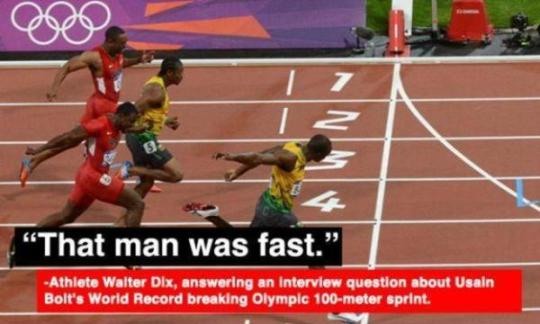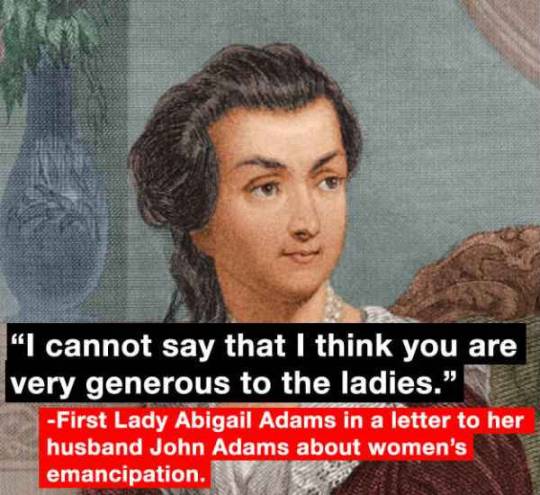Photo

REASONS FOR ADMISSION
WEST VIRGINIA HOSPITAL FOR THE INSANE (WESTON)
OCTOBER 22, 1864 to DECEMBER 12, 1889
Amenorrhea
Asthma
Bad company
Bad habits & political excitement
Bad whiskey
Bite of a rattle snake
Bloody flux
Brain fever
Business nerves
Carbonic acid gas
Carbuncle
Cerebral softening
Cold
Congestion of brain
Constitutional
Crime
Death of sons in the war
Decoyed into the army
Deranged masturbation
Desertion by husband
Diphtheria
Disappointed affection
Disappointed love
Disappointment
Dissipation of nerves
Dissolute habits
Dog bite
Domestic affliction
Domestic trouble
Doubt about mother’s ancestors
Dropsy
Effusion on the brain
Egotism
Epileptic fits
Excessive sexual abuse
Excitement as officer
Explosion of shell nearby
Exposure & hereditary
Exposure & quackery
Exposure in army
Fall from horse
False confinement
Feebleness of intellect
Fell from horse
Female disease
Fever
Fever & loss of law suit
Fever & nerved
Fighting fire
Fits & desertion of husband
Gastritis
Gathering in the head
Greediness
Grief
Gunshot wound
Hard study
Hereditary predisposition
Ill treatment by husband
Imaginary female trouble
Immoral life
Imprisonment
Indigestion
Intemperance
Interference
Jealousy
Jealousy & religion
Kick of horse
Kicked in the head by a horse
Laziness
Liver and social disease
Loss of arm
Marriage of son
Masturbation & syphilis
Masturbation for 30 years
Medicine to prevent conception
Menstrual deranged
Mental excitement
Milk fever
Moral sanity
Novel reading
Nymphomania
Opium habit
Over action on the mind
Over heat
Over study of religion
Over taxing mental powers.
Parents were cousins
Pecuniary losses: worms
Periodical fits
Political excitement
Politics
Puerperal
Religious enthusiasm
Religious excitement
Remorse
Rumor of husband’s murder or desertion
Salvation army
Scarlatina
Seduction
Seduction & disappointment
Self abuse
Severe labor
Sexual abuse and stimulants
Sexual derangement
Shooting of daughter
Smallpox
Snuff
Snuff eating for two years
Softening of the brain
Spinal irritation
Sun stroke
Sunstroke
Superstition
Suppressed masturbation
Suppression of menses
Tabacco & masturbation: hysteria
The war
Time of life
Trouble
Uterine derangement
Venereal excesses
Vicious vices in early life
Women
Women trouble
Young lady & fear
885 notes
·
View notes
Text
Artists Covertly Scan Bust of Nefertiti and Release the Data for Free Online
An Iraqi/German pair of artists just pulled off what might be one of the most digitally-enhanced art heists in recent time. They covertly scanned the Nefertiti bust (with an Xbox 360 Kinect sensor, no less) and released the 3D printing plans online. They did so as an act of defiance, as the bust was actually looted from an Egyptian site by German archaeologists.[x]

[article by Claire Voone /Hyperallergic]
Last October, two artists entered the Neues Museum in Berlin, where they clandestinely scanned the bust of Queen Nefertiti, the state museum’s prized gem. Three months later, they released the collected 3D dataset online as a torrent, providing completely free access under public domain to the one object in the museum’s collection off-limits to photographers. Anyone may download and remix the information now; the artists themselves used it to create a 3D-printed, one-to-one polymer resin model they claim is the most precise replica of the bust ever made, with just micrometer variations. That bust now resides permanently in the American University of Cairo as a stand-in for the original, 3,300-year-old work that was removed from its country of origin shortly after its discovery in 1912 by German archaeologists in Amarna.

Nora Al-Badri and Jan Nikolai Nelles with the 3D bust in Cairo
The project, called “The Other Nefertiti,” is the work of German-Iraqi artist Nora Al-Badri and German artist Jan Nikolai Nelles, who consider their actions an artistic intervention to make cultural objects publicly available to all. For years, Germany and Egypt have hotly disputed the rightful location of the stucco-coated, limestone Queen, with Egyptian officials claiming that she left the country illegally and demanding the Neues Museum return her. With this controversy of ownership in mind, Al-Badri and Nelles also want, more broadly, for museums to reassess their collections with a critical eye and consider how they present the narratives of objects from other cultures they own as a result of colonial histories.
The Neues Museum, which the artists believe knows about their project but has chosen not to respond, is particularly guarded towards accessibility to data concerning its collections. According to the pair, although the museum has scanned Nefertiti’s bust, it will not make the information public — a choice that increasingly seems backwards as more and more museums around the world are encouraging the public to access their collections, often through digitization projects. Notably, the British Museum has hosted a “scanathon” where visitors scanned objects on display with their smartphones to crowdsource the creation of a digital archive — an event that contrasts starkly with Al-Badri and Nelles’s covert deed.
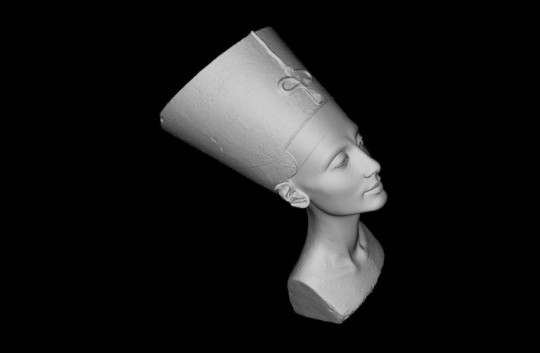
3D rendering of the bust of Nefertiti
“We appeal to [the Neues Museum] and those in charge behind it to rethink their attitude,” Al-Badri told Hyperallergic. “It is very simple to achieve a great outreach by opening their archives to the public domain, where cultural heritage is really accessible for everybody and can’t be possessed.”
In a gesture of clear defiance to institutional order, Al-Badri and Nelles leaked the information at Europe’s largest hacker conference, the annual Chaos Communication Congress. Within 24 hours, at least 1,000 people had already downloaded the torrent from the original seed, and many of them became seeders as well. Since then, the pair has also received requests from Egyptian universities asking to use the information for academic purposes and even businesses wondering if they may use it to create souvenirs. Nefertiti’s bust is one of the most copied works from Ancient Egypt — aside from those with illicit intents, others have used photogrammetry to reconstruct it — and its allure and high-profile presence make it a particularly charged work to engage with in discussions of ownership and institutional representations of artifacts.

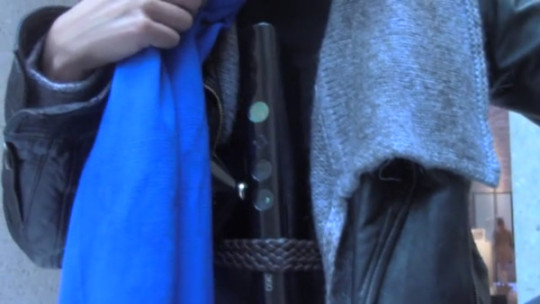
“The head of Nefertiti represents all the other millions of stolen and looted artifacts all over the world currently happening, for example, in Syria, Iraq, and in Egypt,” Al-Badri said. “Archaeological artifacts as a cultural memory originate for the most part from the Global South; however, a vast number of important objects can be found in Western museums and private collections. We should face the fact that the colonial structures continue to exist today and still produce their inherent symbolic struggles.”
Al-Badri and Nelles take issue, for instance, with the Neues Museum’s method of displaying the bust, which apparently does not provide viewers with any context of how it arrived at the museum — thus transforming it and creating a new history tantamount to fiction, they believe. Over the years, the bust has become a symbol of German identity, a status cemented by the fact that the museum is state-run, and many Egyptians have long condemned this shaping of identity with an object from their cultural heritage.
vimeo
The heist: museumshack from jnn on Vimeo
Ultimately, the artists hope their actions will place pressure on not only the Neues Museum but on all museums to repatriate objects to the communities and nations from which they came.
Rather than viewing such an idea as radical, they see it as pragmatic, as a logical update to cultural institutions in the digital era: especially given the technological possibilities of today, the pair believes museums who repatriate artifacts could then show copies or digital representatives of them. Many people have already created their own Nefertitis from the released data; the 3D statue in the American University in Cairo stands as such an example of Al-Badri and Nelles’s ideals for the future of museums, in addition to being one immediate solution that may arise from individual action.
“Luckily there are ways where we don’t even need any topdown effort from institutions or museums,” Al-Badri said, “but where the people can reclaim the museums as their public space through alternative virtual realities, fiction, or captivating the objects like we did.”
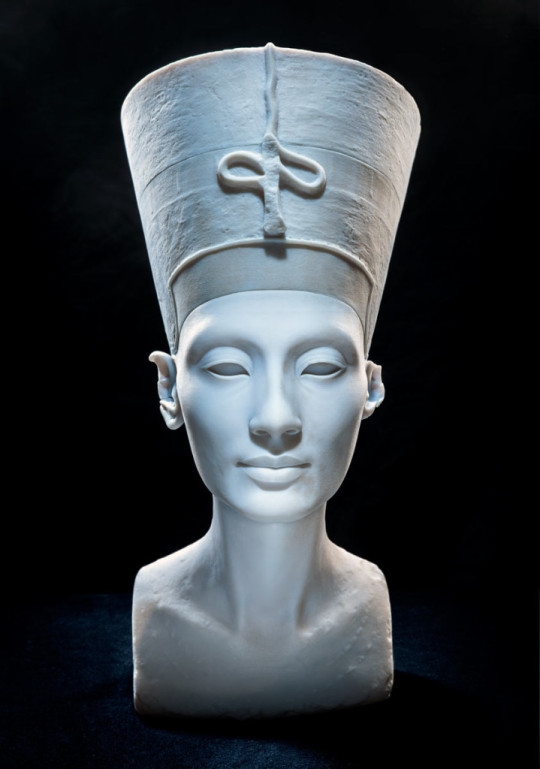
3D-printed bust of Nefertiti
[source: Hyperallergic, emphasis mine]
53K notes
·
View notes
Text
im putting together a couple of scottish folk mixes bc that’s what i do and im honestly curious if anyone in my country has ever been unequivocally happy about anything ever
140K notes
·
View notes
Photo
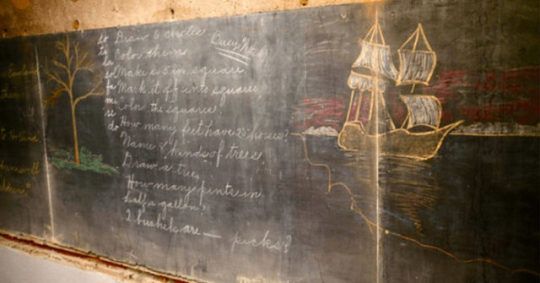
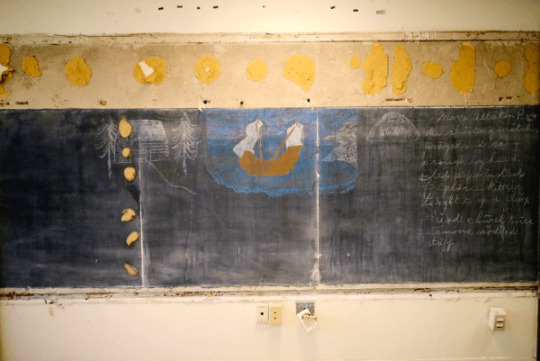
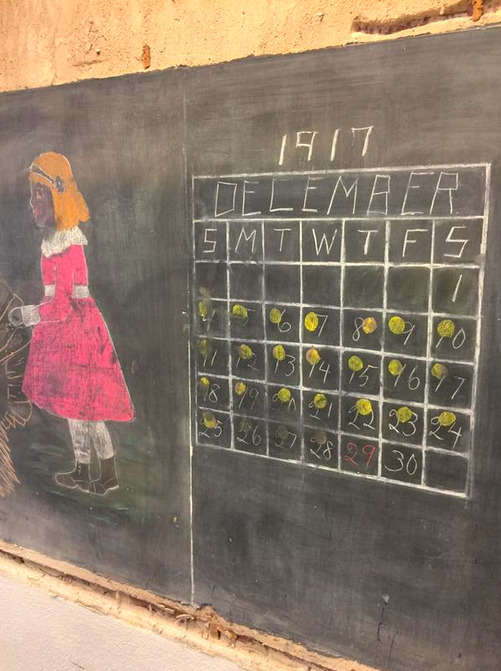
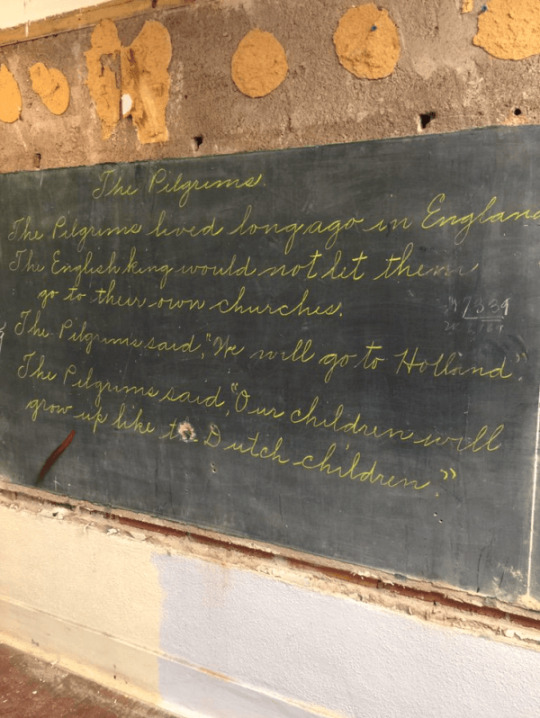

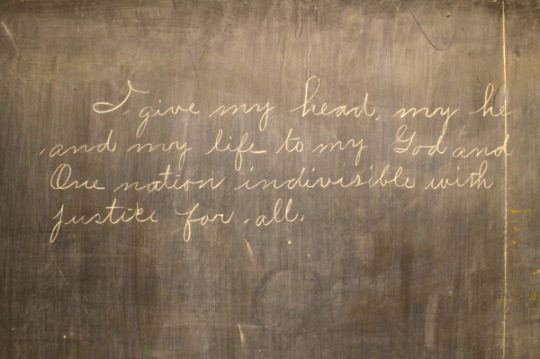
“Classrooms at Emerson High School in Oklahoma City were getting a routine facelift when renovators accidentally uncovered an incredible glimpse into the history of American education.
Construction workers were removing chalkboards– taking them down to replace them with new Smart Boards– when they stumbled upon some older chalkboards underneath. Luckily, they stopped to examine the chalkboards before destroying them, and they quickly realized that the boards were from 1917… Nearly 100 years ago! Stuck underneath layers of other boards, these antique chalkboards had been preserved with the chalk still on them, providing an amazing view of life in a mid-20th-century classroom.
The wheel above, for example, is an outdated method for teaching multiplication. “I have never seen that technique in my life,” Kishore said. Another common lesson that looks different is the Pledge of Allegiance.
“I give my head, my heart, and my life to my God and One nation indivisible with justice for all.”It’s unclear why this pledge differs from the early version of the Pledge of Allegiance that was established in 1892, but it clearly borrows some phraseology from that Pledge.“
860 notes
·
View notes
Photo

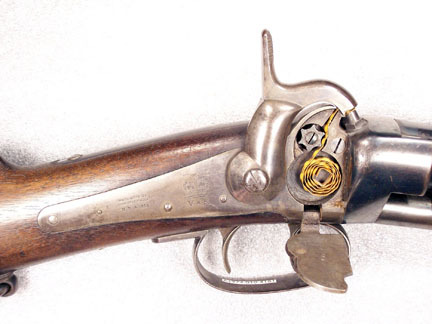
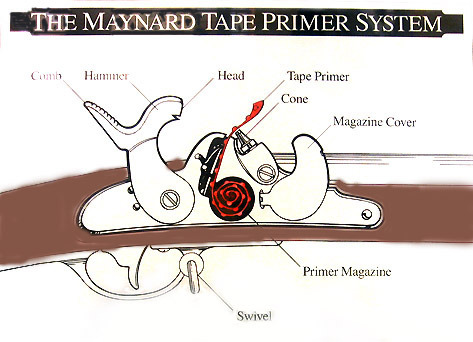
The Springfield Model 1855 rifled musket,
The Springfield Model 1855 was one of the most unusual muskets produced for the US Army. It was also a great leap in technology which ushered the army from an age of Napoleonic Warfare into the age of modern warfare. The Model 1855 boasted several advances that were unlike all other American musket designs produced before it. First and foremost the M1855 was the first American rifled musket, using the deadly conical shaped minie ball. Before the M1855 all muskets produced for the US military were smoothbore, which mean’t they lacked the rifling of a rifle. This was done because muskets at the time fired a simple round ball. It took a lot more time to load a rifle because the user had to cram the ball against the rifling down the bore with a patch, whereas with a smoothbore the user only had to drop a slightly under-caliber ball down the barrel. Of course, this cost the smoothbore musket accuracy compared to a rifle. The M1855 used what was called a minie ball, a recent invention by French Army Captain Claude Etienne Minie. The minie ball was conical shaped and had a hollow rear end. Thus the user could simply drop it into the barrel like the older round ball. When the musket was fired, the minie ball would expand into the rifling, thus giving it accuracy. The minie ball was an incredible advance in firearms technology because it allowed muskets to have the accuracy of a rifle, but the loading speed of a smoothbore. With the adoption of the minie ball came a reduction in caliber as well. Originally American muskets were based on French muskets and thus were .69 caliber. At first a .69 caliber minie ball was considered by both French and American ordnance officials, however, it was determined that a smaller caliber bullet would have better accuracy and range. Thus a .58 caliber minie ball was developed and adopted with the Model 1855 produced in .58 caliber.
The most unusual addition to the M1855 was the Maynard Tape System, invented by a dentist named Edward Maynard in 1845. Unlike other percussion firearms which used copper caps filled with mercury fulminate (percussion caps), the Maynard system used a paper tape filled with blots of mercury fulminate. A mechanism advanced the tape over the nipple of the musket when the hammer was cocked, and when the hammer struck it, a spark traveled down the nipple and ignited the main powder charge in the chamber. It worked much in the same way roll caps work in a toy cap gun today. Unlike other Springfield models, the M1855 featured a noticeable “hump” on the lock, which contained a spinning roll of tape. The theory behind the Maynard System was that it sped up the loading process. Soldiers only had to worry about loading the rifle without placing a cap on the nipple. US Army Ordnance was skeptical of the new system, but Maynard found a friend in then Secretary of War Jefferson Davis, who was very enthusiastic about Maynard’s system. As a result, the Maynard Tape System was included in the M1855 design. While a great idea in theory, in practice the Maynard System proved to be impractical in the real world. Often the Maynard mechanism malfunctioned or failed to advance the tape directly over the nipple. Tests also found that the Maynard tape itself tended to misfire. The tape was also very susceptible to moisture, humidity, dirt, and mud. As a result, the tape system was abandoned, and the US Army simply used standard percussion caps with the musket.
The Model 1855 was used primarily in the American Civil War by both Union and Confederate forces. It was succeeded by the Springfield Model 1861 and 1863. Around 60,000 were produced.
311 notes
·
View notes
Photo
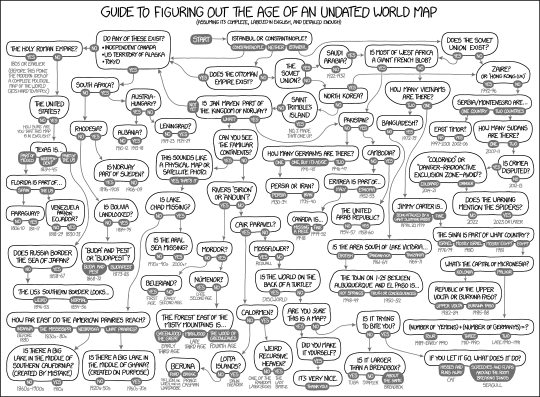
Guide to Figuring out the Age of an Undated World Map.
250K notes
·
View notes
Text
It’s Confederate Heritage Month, and you know what that means!

4K notes
·
View notes
Text
Marie Sklodowska Curie Brought X-Ray Machines To the Battlefield


During World War I, the scientist invented a mobile x-ray unit, called a “Little Curie,”.
Curie personally trained 150 women to operate it. Her curriculum taught to the women included theoretical instruction about the physics of electricity and X-rays as well as practical lessons in anatomy and photographic processing. When that group had finished its training, they left for the front.
2K notes
·
View notes
Text

Out of the nearly 3,500 Medal of Honor recipients, only one was a woman. Dr. Mary Walker was an American abolitionist, prohibitionist, prisoner of war, and surgeon.
Mary’s parents encouraged her to pursue an education and in 1855, she graduated as a medical doctor from Syracuse Medical College. In fact, Mary was the first woman to ever graduate from the college. Then when the Civil War broke out, she wanted to join the army as a surgeon. However, since she was a woman, she wasn’t allowed. Instead, Mary volunteered for the Union Army, working for free at the temporary hospital set up in Washington D.C. In 1863, Mary’s medical credentials were accepted and she moved to Tennessee where she became a War Department surgeon. Then the following year, Mary was captured and held as a prisoner of war for around four months. Mary was finally released during an exchange of prisoners of war.
In addition to her efforts during the war, Mary was also an advocate for women’s rights. At the time, women weren’t allowed to wear clothing that was supposedly designed for me. Mary started to wear whatever clothing she wanted and was arrested for “impersonating” a man. During her arrest, an officer twisted her arm and asked her if she had ever had sex with a man. Mary opposed to women being expected to wear long skirts and petticoats, arguing that they spread dirt and dust. Mary wasn’t well liked by leading suffragists such as Susan B. Anthony and Lucretia Mott who claimed she was giving the “wrong image” for her clothing style.
Then in 1895, Mary was awarded the Medal of Honor by President Andrew Johnson despite the fact Mary was a civilian who had never been a commissioned officer in military service. That’s why in 1917, Mary’s medal was rescinded. Mary refused to give up her Medal of Honor and continued to wear it until she died two years later. Sixty years later, Mary’s Medal of Honor was restored.
3K notes
·
View notes
Text

Solid fashion advice from a cavalry historian: never buy a pair of shoes unless it matches both your handbag and your sword (◡‿◡✿)
16K notes
·
View notes
Text
Me in history class: Wow, humanity has been through some fascinating times! I wonder if I’ll ever live through major historical events!
Me now: NO NO NO NO NO I WANT TO GET OFF THIS RIDE
580K notes
·
View notes
Note
Do you have advice for reading yeoldie handwriting, because honestly that's one of the hardest things when I'm doing research.
It really varies based on what time period you’re dealing with, but a few general tips for people off the top of my head…
1. This first one may seem insultingly obvious, but…
If you don’t already know it - LEARN CURSIVE.
I completely understand why they don’t teach it anymore, but if you are planning to work with historical documents in any capacity it is NOT an optional skill.
It also helps to find a period penmanship chart specific to the era you’re working with and learn how all the individual letters were written then - a lot of times they’ve changed.
Some letters, that you wouldn’t necessarily think of as being similar, looked a lot alike at certain points in history. Capital W’s, H’s and N’s are pretty darn indistinguishable in a lot of mid-19th century documents. Same with capital S’s and L’s.
2. Practicing writing in whatever style writing you are trying to read is also incredibly helpful.
Try writing with a fountain pen or a quill to see how it changes how you write.
I mentioned before in a post that I never got the point of the “long s” before I tried writing with a quill and discovered what a pain writing two s’s in a row was.
Sometimes if you can’t figure out a word, copying it out yourself will make something click.
Practicing like this will also really help you understand why you see a lot of the common writing quirks/errors I’m going to mention in my next tip.
3. It may seem obvious, but keep always keep in mind that people are people and they make mistakes. They skip words, make spelling errors, get their/there/they’re or to/too mixed up, squish letters/words together, forget to dot their i’s and cross their t’s, etc.
The most common handwriting quirks/errors that seem to throw people off are…
-‘i’ dots not being above the ‘i’ (or not being there at all)/‘t’ crosses not actually crossing the ‘t’, being forgotten, or just crossing the entire word with no regard for where the ‘t’ actually is
for example…
vacation…

father…
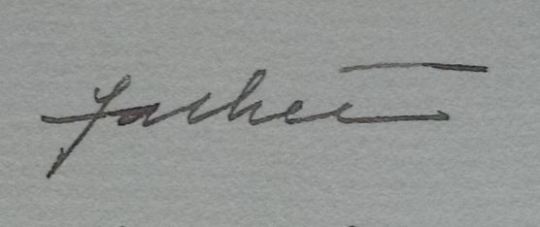
that (in which Rachel manages to cross the H and miss the two T’s entirely)…

-Numerous what I call “bumpy letters” (notably: m, n, r, u, w) in a row.
I must stop now…

Sometimes counting the bumps works (3 for m, 2 for n/u, etc) but, because people are people, there aren’t always as many as there should be.
(side note: combining “I” with the following word, like it is above, it is something you see a lot around turn of the century.)
3. CONTEXT. Context is your best friend in reading any handwriting.
For example this word on it’s own may stump you…
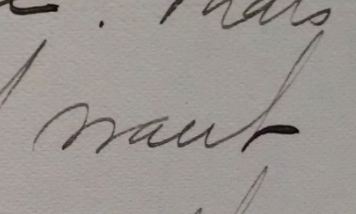
but in context it because pretty clear, even without the t’s crossed…
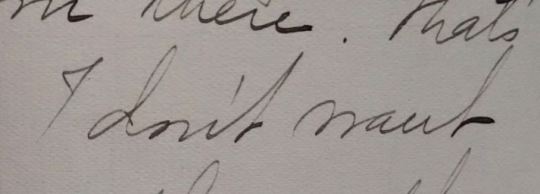
If you’re stumped by a word don’t just stop. Read to the end of the sentence or the paragraph. Lots of times the context will clear it up right away.
4. My best tip for if you get stuck with a word is to go through the document and compare the letters in the problem word to other letters in the document you can read or figure out by context. People tend to be pretty consistent in the way they form letters.
For example: Rachel’s “e”’s threw me off for the longest time until I took specific note of how she wrote them…
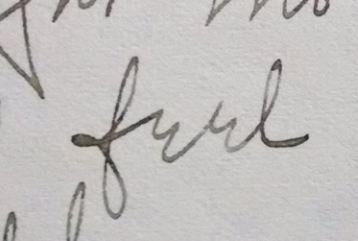
Honestly for a few cases of really horrible handwriting I’ve worked with I’ve actually gone through and made myself self a photoshop chart with samples of how the writer writes each letter so I could compare as I went without going back through the document.
5. For names you can’t make out - googling or checking other sources to compare is always helpful.
Just today Jennie was talking about a French violinist she saw whose name I couldn’t figure out at all besides the “M” at the beginning. So I went to Wikipedia and found a list of French classical violinists, went through all the names starting with “M” and figured it out pretty easily from there.
If you’re working with a lot of material written by the same person; keeping a list of all the family/friends/associates/places that they’ve mentioned is incredibly helpful for figuring out problem names later on.
6. If you’re stuck on something and it’s not of absolutely vital importance to you understanding the document - just skip it and move on. It’s not worth obsessing over one word.
I just searched my huge Rachel & Co. master document and found 686 results for “[?]” and 203 for “[illegible]”. I’m sure I’ll figure a lot of those out when I eventually go back and proofread, but transcriptions in the National Archives still contain a whole lot of words even the experts can’t figure out.
Also, lots of times if you’re getting frustrated - walking away, reading something else, and coming back later can work wonders.
7. But honestly, like acquiring any skill, the best thing is just lots and lots of practice.
I’ve had quite a few instances with frustrating handwriting where it’s almost like staring at a Magic Eye picture. You’re struggling along and suddenly something in your brain just clicks and you’re left wondering how you couldn’t see that before.
The more you read the easier it gets. Promise.
645 notes
·
View notes
Text
Today’s highlights in my ongoing project to read through and transcribe the letters of Rachel (a wealthy Victorian girl at boarding school on the East Coast in the 1890s) include…
Rachel’s cousin Will and his Yale roommate Allen both have the measles. Rachel shows limited sympathy (”Poor boy!”), before immediately mocking them and calling them “childish” for getting a disease only little kids get.
Rachel and her roommate “B” (It stands for Bertha!) attempted to steal a sign (what sort idk) from a fair they went to but found they “were carefully guarded”. She wishes Will could have been there to help.
Will has a crush on a girl named Jenny, who Rachel knows, and is constantly asking Rachel if Jenny has mentioned him.
“B” often sits next to Rachel as she writes and suggests things to add to the letter or just generally distracts her.
Will and Jack, who are brothers, don’t write to each other. They write to Rachel and tell her to write to the other and pass on a message for them. Rachel keeps asking why they do this, but goes along with it anyways.
Rachel always explains why there are ink blots or areas of sloppy writing in her letters. Explanations so far include such classics as: the dinner bell just rang, it’s after lights-out and I’m writing this in the dark, “B” is shaking my arm, “B” is kissing me, this pen is broken, the postman is almost here, and there was a bee.
For her 18th birthday Rachel received: a new Kodak camera, eighteen white rosebuds, silver manicure scissors, a pair of shell side combs, a silver pencil, and a vase of pink roses. However her favorite present was from her father who wrote to say she could just buy her own present and he would pay for it.
Rachel is always mentioning the pictures she takes with her Kodak. I wish I knew what happened to them.
In addition to Calvé, Marlowe and Sothern, Rachel has now also gone to see performances by Ellen Terry, Henry Irving, John Philip Sousa, Ignacy Jan Paderewski (playing the piano, not governing Poland), and freaking Sarah Bernhardt!
Rachel likes to put question marks in the middle of sentences to denote sarcasm; i.e. “I am very ? sorry for you.” and “Men were not excluded and we had the pleasure ? of meeting several.”
Your 1890s slang word of the day: “squelch” (verb) - to be lectured or punished for something. Example: “I expect to be squelched unmercifully by mama and papa.” Can also be used as a noun as in: “This term we have had nothing but squelches.”
25K notes
·
View notes
Photo
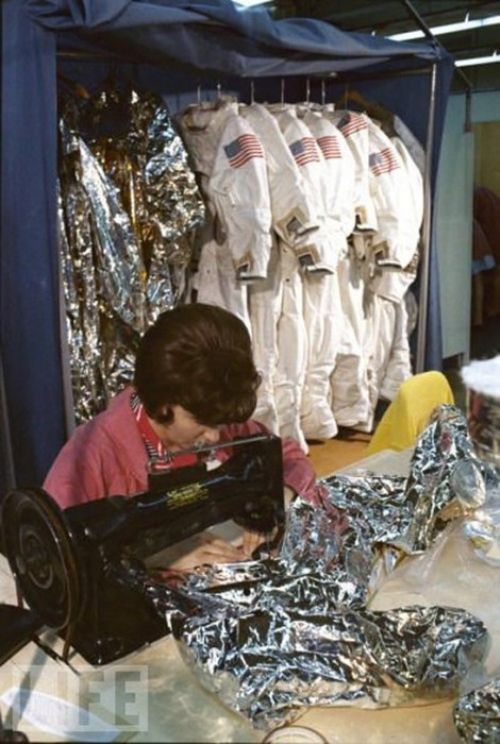
Sewing the outfits for the Apollo mission, 1968. Each astronaut had a custom-fitted suit!
1K notes
·
View notes
Photo


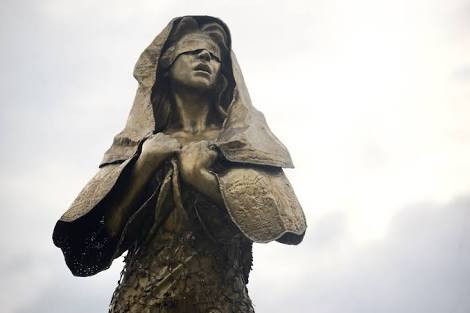
Please reblog this even if you don’t care
They’re trying to erase the existence of the rape victims of Japanese soldiers in World War II because they think the reminder of their crimes might make Japan a little bit cross
Duterte, the absolute coward, is more worried about women criticizing him than actually honoring the women this country needs to remember
Please don’t let these women be silenced.
73K notes
·
View notes
Photo

1. Garland Ironmonger is the best name I’ve ever seen.
2. I looked Mr. Ironmonger up and it turns out he grew up to be an honest to god fighter pilot.
3. COLONEL Ironmonger flew F-86 Sabres.
4. Garland Ironmonger: Sabrejet Pilot sounds like something straight out of a bad 70s sci-fi novel that I would totally read.
(source: The Newport News Daily Press, December 15, 1936.)
33K notes
·
View notes







